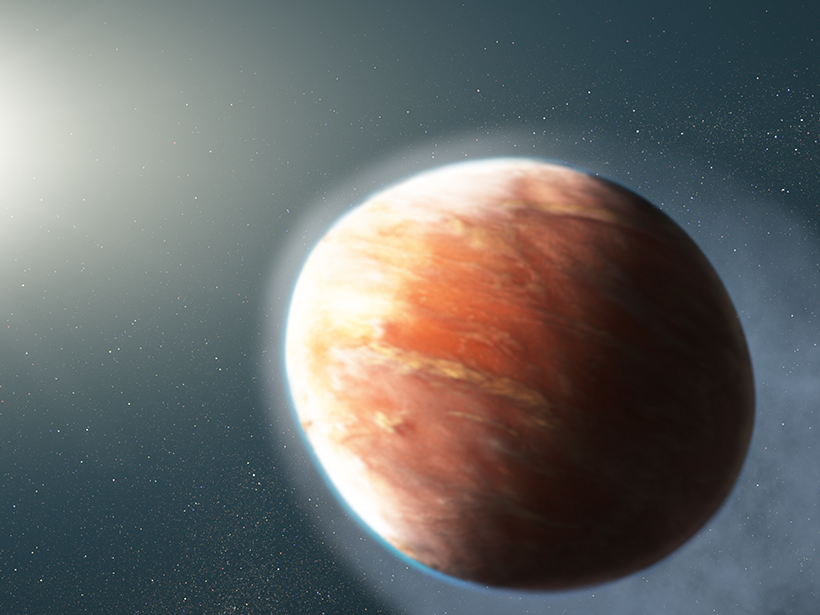There’s an exoplanet only 900 light-years from Earth that is so hot its atmosphere bleeds magnesium and iron. Astronomers have discovered that the gas giant, WASP-121b, is hot enough inside that its atmosphere sheds heavy metals instead of condensing them into clouds.
The researchers, led by astrophysicist David Sing at Johns Hopkins University in Baltimore, Md., measured the ultraviolet spectrum of WASP-121b using the Hubble Space Telescope. They looked for imprints of elements and molecules on the distant star’s spectrum as the planet passed in front of it. In this transmission spectrum, they found traces of ionized magnesium and iron farther away from the planet than they expected.
“Heavy metals have been seen in other hot Jupiters before, but only in the lower atmosphere,” Sing said in a statement. “With WASP-121b, we see magnesium and iron gas so far away from the planet that they’re not gravitationally bound.”
WASP-121b is so hot because it orbits its star about 15 times closer than Mercury orbits the Sun. The heat puffs up the planet to twice the size of Jupiter, weakens the planet’s gravity, and makes it easier for metals to bleed away.
The puffiness also makes it easier for the star to distort the planet’s shape. The data suggest that WASP-121b is oblong, shaped more like an American football than a soccer ball.
The results were published in the Astronomical Journal on 1 August.
—Kimberly M. S. Cartier (@AstroKimCartier), Staff Writer
Citation:
Cartier, K. M. S. (2019), Ultrahot exoplanet bleeds heavy metals into space, Eos, 100, https://doi.org/10.1029/2019EO130343. Published on 05 August 2019.
Text © 2019. AGU. CC BY-NC-ND 3.0
Except where otherwise noted, images are subject to copyright. Any reuse without express permission from the copyright owner is prohibited.

